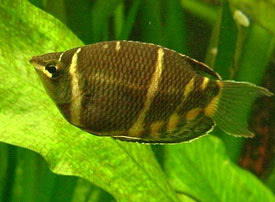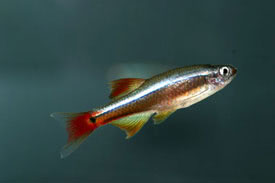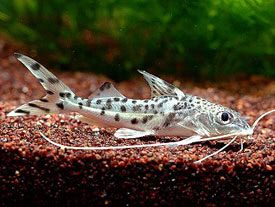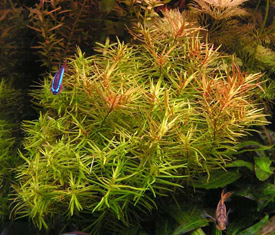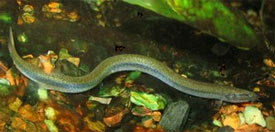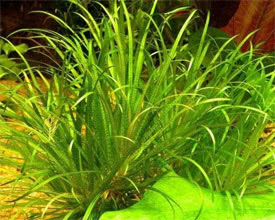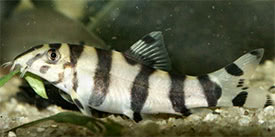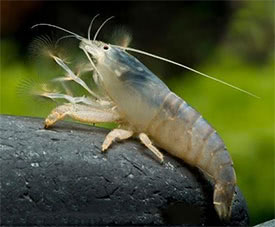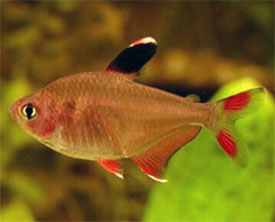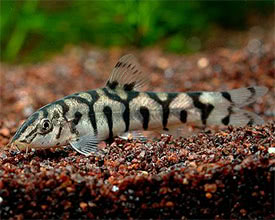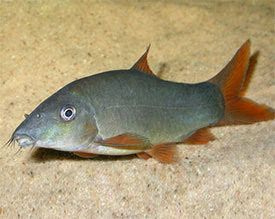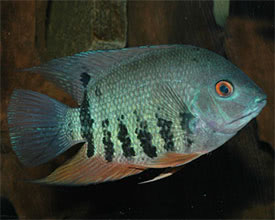Botia kubotai - Burmese Border Loach, Polka-Dot Loach
 Magyarul / Hungarian
Magyarul / Hungarian

 Magyarul / Hungarian
Magyarul / Hungarian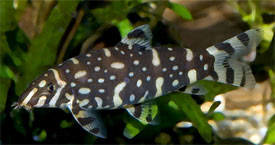
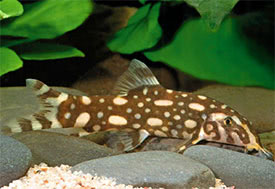
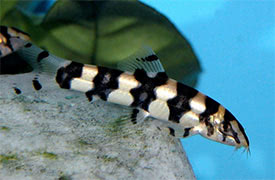
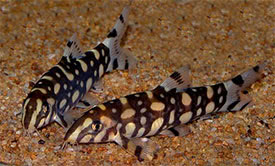
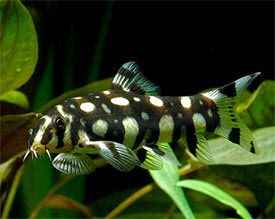



- Scientific name: Botia kubotai
- Synonyms: Botia "angelicus"
- Common name: Burmese Border Loach, Polka-Dot Loach
- Group: Loaches
- Distribution: Asia; Southeastern parts of Myanmar (Burma) at the border of Thailand.
- Size: 14-15 cm
- Biotope: Endemic to the Salween River basin, where it lives in the slow-flowing areas of forest-shaded, well-oxygenated streams and smaller rivers, usually with sandy bottom plus lots of submerged driftwood, rocks and leaf litter.
- Social behavior: A gregarious fish, so they should be kept in a small group of at least 5 species. Quite peaceful loach that can be housed with other peaceful species, but can be nippy with long-finned fishes.
- Diet: Omnivorous; in nature it eats aquatic molluscs, insects, worms, and other invertebrates as well as soft-leaved aquatic plants. In the aquarium it can be fed with small live and frozen foods, and quality dried foods. It will eat small snails.
- Breeding: It has not been bred in aquarium.
- Tank: Minimum 200 litres
- Population: 5-6 fish for 250 litres
- Decoration: Build a densely planted aquarium with lots of rocks and driftwoods that make many hiding places for the fish. Use sand or small gravel as substrate, as they like to dig. The lighting shouldn't be bright.
- Temperature: 22-28 °C
- pH: 6.0-7.5
- Hardness: 2.0-10.0 dGH
- Lifespan: 8-12 years
Description: Botia kubotai is a more recent arrival to the hobby (discovered in 2002 during an expedition), commonly known as the Polka Dot Loach or Burmese Border Loach. It has been named in honour of Katsuma Kubota, a member of an aquarium export company in Thailand who was the first to find this species and sent them out for identification. Botia kubotai has the classic Botiid loach shape - a long, quite slender, laterally compressed body with a gently curved back and a straight belly. They have a relatively small, underslung mouth which is fringed with 4 pairs of small whiskers: two pairs near the tip of the "nose", one pair on the "chin" and another pair on the corners of its mouth. The tail is deeply forked and marked with a series of dark bars and blotches, as are all their fins. Burmese Border Loach is very variable in pattern and can change quite dramatically as it grows. Their patterning is made up of yellow spotted horizontal black stripes that are interspersed with yellow spotted vertical bars. Generally, the dark areas gradually increase in size as the fish matures, and there is lots of variation in the size and number of yellow spots. Polka-Dot Loach can thrive in a wide range of water parameters, although softer and more acidic water is generally preferred. When kept in a small group, they become bolder and often rise into midwater at meal times. In common with other scaleless or small-scaled fish, they are susceptible to ich and other skin parasites and are very sensitive to the medications used to treat it. Just below each eye these loaches have a suborbital spine, which can be extended in defence or sometimes used as a weapon against rivals. Fishkeepers need to be aware of this when netting the fish as they can become entangled or inflict a nasty cut if poorly handled.
Mature females have fuller body with a rounded snout, while adult males have elongated snouts with noticeably fleshier lips.
There are no reports about their breeding habits.
Sources:
http://www.fishbase.org/summary/botia-kubotai.html
http://www.seriouslyfish.com/species/botia-kubotai/
http://www.loaches.com/species-index/botia-kubotai
http://animal-world.com/encyclo/fresh/loaches/BurmeseBorderLoach.php
https://en.wikipedia.org/wiki/Burmese_border_loach
http://www.practicalfishkeeping.co.uk/features/articles/polka-dot-loach-botia-kubotai
http://badmanstropicalfish.com/profiles/profile87.html
Practical Fishkeeping 2017.03
http://www.fishbase.org/summary/botia-kubotai.html
http://www.seriouslyfish.com/species/botia-kubotai/
http://www.loaches.com/species-index/botia-kubotai
http://animal-world.com/encyclo/fresh/loaches/BurmeseBorderLoach.php
https://en.wikipedia.org/wiki/Burmese_border_loach
http://www.practicalfishkeeping.co.uk/features/articles/polka-dot-loach-botia-kubotai
http://badmanstropicalfish.com/profiles/profile87.html
Practical Fishkeeping 2017.03
Hasonló vízparamétereket igénylő fajok







